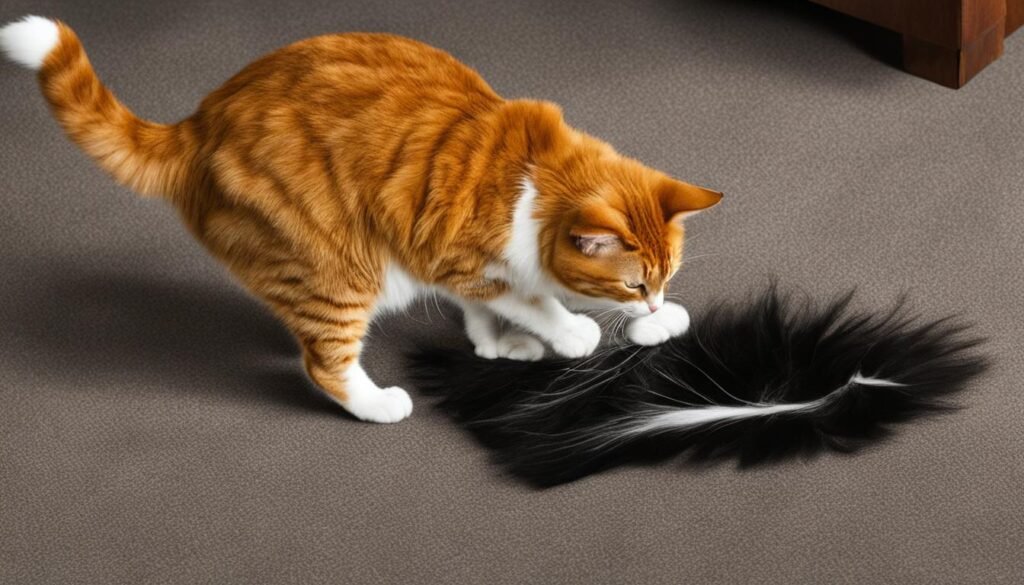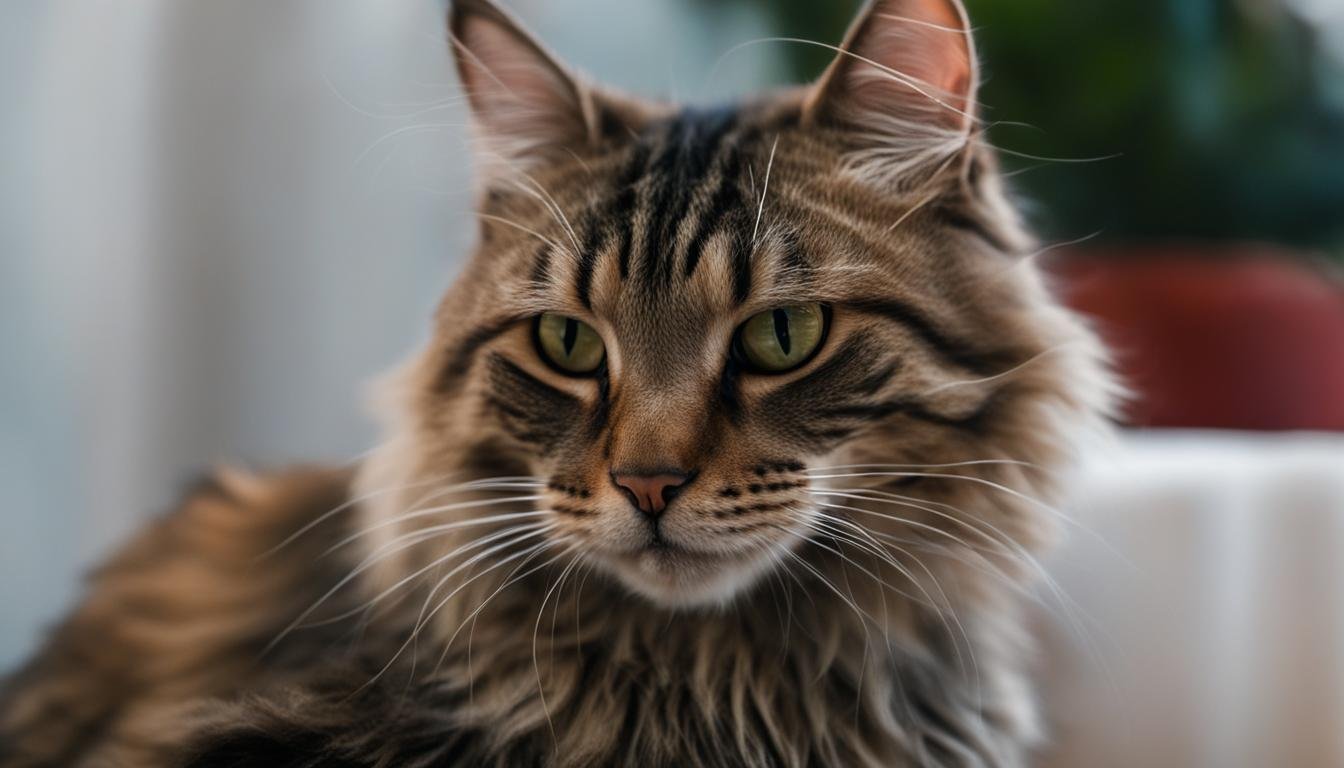When cats start pulling their hair out, it can be concerning for cat owners. This behavior, known as feline overgrooming, can lead to hair loss and skin problems in cats. There are several reasons why cats engage in excessive grooming, including stress, anxiety, boredom, and various medical conditions. It is important to understand the underlying cause of the behavior and take appropriate steps to address it in order to ensure the cat’s health and wellbeing.
Why Do Cats Pull Their Hair Out?
Cats may pull their hair out for various reasons. The most common causes of excessive grooming include stress, anxiety, boredom, and medical conditions such as allergic reactions, fungal infections, and genetics. Cats may engage in overgrooming as a self-soothing behavior or as a response to changes in their environment. It is important to identify the specific cause of the behavior in order to provide appropriate treatment and prevent further hair pulling.
Stress and Anxiety
Stress and anxiety can be a major factor in cat hair pulling. Cats are sensitive animals and can become stressed or anxious due to changes in their environment, such as the addition of a new pet, moving to a new home, or disruptions in their routine. This can lead to excessive grooming as a way for the cat to self-soothe and cope with their emotions.
Boredom
Just like humans, cats can get bored. When cats are bored, they may turn to excessive grooming as a way to occupy themselves. This can result in hair pulling and potential skin problems. Providing environmental enrichment, such as interactive toys, scratching posts, and regular playtime, can help alleviate boredom and reduce the likelihood of excessive grooming.
Medical Conditions
Underlying medical conditions can also contribute to cat hair pulling. Allergic reactions, fungal infections, and genetics can cause discomfort or irritation on the skin, leading to excessive grooming and hair loss. It is important to consult with a veterinarian to identify any medical conditions and develop a treatment plan to address both the underlying cause and the hair pulling behavior.
“Cats may pull their hair out as a self-soothing behavior or as a response to changes in their environment.”
To address the issue of excessive grooming and hair pulling, it is crucial to determine the specific cause. Whether it is due to stress, anxiety, boredom, or underlying medical conditions, a comprehensive approach is necessary. By identifying and addressing the root cause, cat owners can help their feline companions find relief from hair pulling and maintain a healthy coat. It is advisable to work closely with a veterinarian to develop a tailored treatment plan that suits the individual needs of the cat.
Medical Causes of Cat Hair Pulling
When cats engage in compulsive grooming behavior, it can be indicative of underlying medical conditions. These conditions can lead to cat self-trauma, hair pulling syndrome in cats, and various cat skin problems. Identifying these medical causes is crucial in developing an effective treatment plan to address the cat’s hair pulling.
Allergies
Allergies are one of the common medical causes of cat hair pulling. Cats can develop allergies to certain foods, environmental factors such as pollen or dust mites, or even flea bites. In an attempt to relieve the itchiness and discomfort associated with allergies, cats may excessively groom themselves, resulting in hair loss and skin problems.
Infections
Infections, such as bacterial or fungal infections, can also trigger compulsive grooming behavior in cats. These infections can cause irritation and discomfort, leading cats to excessively groom and pull their hair out. Identifying and treating the underlying infection is essential in resolving the hair pulling syndrome and promoting skin health.
Neurological Disorders
Neurological disorders, such as seizure disorders or neuropathic pain, can cause cats to exhibit compulsive grooming behavior. The abnormal neurological signals can contribute to the cat’s hair pulling and self-trauma. Adequate diagnosis and management of these disorders are crucial in providing relief to the cat and improving its overall well-being.
Autoimmune Disorders
Cats with autoimmune disorders may experience excessive grooming and hair pulling due to the immune system attacking the hair follicles. This can result in hair loss and skin problems. It is important to work closely with a veterinarian to diagnose and manage these disorders effectively.
Sensory Issues
Sensory issues, such as hypersensitivity to touch or abnormal sensations, can also play a role in cat hair pulling. Cats with sensory issues may constantly groom themselves as a way to relieve discomfort or cope with their sensory challenges. Identifying and addressing these sensory issues is crucial in managing the cat’s hair pulling syndrome.
If your cat is displaying compulsive grooming behavior and experiencing hair pulling or skin problems, it is important to consult with a veterinarian. Only a professional can accurately diagnose the underlying medical cause and develop an appropriate treatment plan to address the cat’s self-trauma and compulsive behavior.
Behavioral Causes of Cat Hair Pulling
In some cases, cat hair pulling can be attributed to behavioral causes. Cats may engage in excessive grooming as a response to stress or anxiety. Changes in the cat’s environment, such as the addition of a new pet or a move to a new home, can trigger this behavior. Feline psychogenic alopecia is a condition characterized by excessive grooming and hair pulling due to stress or boredom. It is important to address the underlying behavioral issues and provide appropriate environmental enrichment to prevent further hair pulling.
Stress and anxiety can have a significant impact on a cat’s behavior. Just like humans, cats can experience stress from various factors, including changes in their routine, unfamiliar surroundings, or conflicts with other animals. This stress can manifest in excessive grooming, leading to hair loss. By identifying and addressing the sources of stress, you can help alleviate the compulsive behavior and promote a healthier, happier feline.
One effective way to reduce stress in cats is to create a calming and enriching environment. Provide plenty of hiding spots, vertical spaces, and interactive toys to keep your cat mentally stimulated. Additionally, consider using pheromone diffusers or sprays, such as Feliway, which can help create a sense of security and relaxation.
Feline psychogenic alopecia, also known as stress-induced hair loss, is a condition in which cats excessively groom themselves due to psychological distress. This behavior can result in noticeable hair loss, thinning, and skin irritation. Identifying the underlying cause of the stress is crucial in managing and preventing further hair pulling. It may be helpful to consult with a veterinarian or a feline behaviorist to determine the most appropriate course of action for your cat.
| Common Causes of Behavioral Hair Pulling | Signs and Symptoms |
|---|---|
| Environmental changes | – Increased grooming – Hair loss – Skin irritation |
| Conflict with other animals | – Obsessive grooming – Bald patches – Redness or inflammation |
| Boredom or lack of stimulation | – Excessive licking or chewing – Thinning hair – Lesions or sores |
Note: It is essential to rule out any underlying medical causes of hair pulling before attributing it solely to behavioral issues. Consulting with a veterinarian is recommended for an accurate diagnosis and appropriate treatment plan.
Treating Cat Hair Pulling
The treatment for cat hair pulling depends on the underlying cause. In cases where medical conditions are causing the behavior, treatment may involve addressing the specific condition through medication or other interventions. For behavioral causes, reducing stress and providing environmental enrichment can help alleviate the behavior. Behavior modification techniques, such as desensitization and counterconditioning, may also be used to modify the cat’s grooming behavior. It is important to work closely with a veterinarian to develop an appropriate treatment plan for the cat.
Medical Treatment for Cat Hair Pulling
If the cat’s hair pulling is due to medical conditions, it is crucial to address and treat these conditions to prevent further self-trauma. The table below highlights some common medical causes of cat hair pulling and their respective treatments:
| Medical Cause | Treatment |
|---|---|
| Allergies | Identifying and avoiding allergens, antihistamines, immunotherapy |
| Infections | Antibiotics or antifungal medications |
| Neurological Disorders | Medication to manage symptoms |
| Autoimmune Disorders | Immunosuppressive therapy |
| Sensory Issues | Environmental modifications, such as soft bedding or avoiding triggers |
Consulting with a veterinarian is essential to accurately diagnose the underlying medical cause and determine the most suitable treatment options for your cat.
Behavioral Treatment for Cat Hair Pulling
When cat hair pulling is caused by behavioral factors, addressing these behaviors is key to reducing self-trauma and compulsive grooming. Here are some strategies that can be implemented:
- Reducing stress: Create a calm and secure environment for your cat and minimize any sources of stress.
- Environmental enrichment: Provide plenty of toys, scratching posts, and interactive play to keep your cat mentally and physically stimulated.
- Behavior modification techniques: Desensitization and counterconditioning can be used to redirect the cat’s grooming behavior to more appropriate activities.
Working with a veterinarian or a veterinary behaviorist can help devise a comprehensive behavior modification plan tailored to your cat’s specific needs.

Remember, addressing cat hair pulling requires a multi-faceted approach that considers both medical and behavioral factors. By identifying and treating the underlying cause, you can help your cat overcome compulsive grooming and promote their overall well-being.
Home Remedies for Cat Hair Pulling
While there are no specific home remedies proven to treat cat hair pulling, there are some things cat owners can do at home to help manage the behavior.
Reducing stress in the cat’s environment can be beneficial in addressing hair pulling. Creating a calm and secure space for the cat, providing hiding spots, and minimizing sudden changes can help alleviate stress and anxiety.
In addition, regular grooming can help remove loose fur, reducing the likelihood of excessive grooming and hair pulling. Brushing your cat’s coat daily can help prevent matting and remove loose hairs. It is important to use gentle grooming techniques to avoid causing further irritation to the skin.
Furthermore, providing environmental enrichment and interactive toys can keep the cat mentally and physically stimulated. Engaging the cat in play sessions and providing scratching posts and puzzle toys can divert their attention from excessive grooming and redirect their energy toward healthier activities.
If allergies are suspected to be the cause of hair pulling, making dietary changes can be beneficial. Consult with a veterinarian to determine if a hypoallergenic or specialized diet would be appropriate for your cat.
Remember, it is important to consult with a veterinarian before trying any home remedies to ensure they are safe and appropriate for your cat’s specific condition. They can provide guidance and recommend the best course of action to address cat hair loss causes, cat self-trauma, and cat skin problems.
